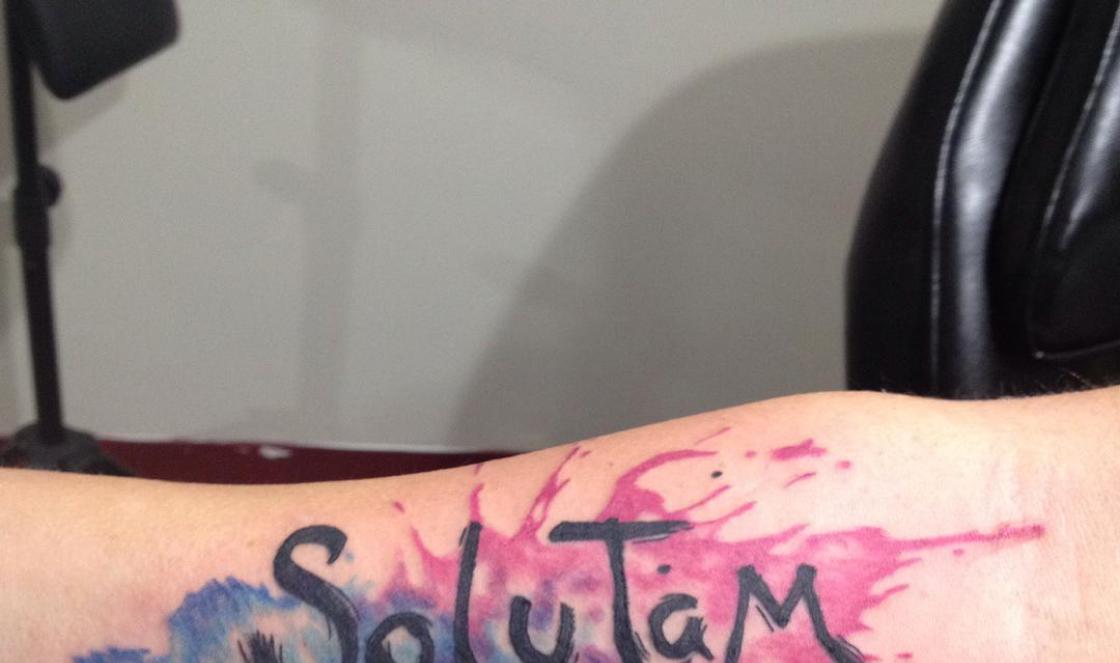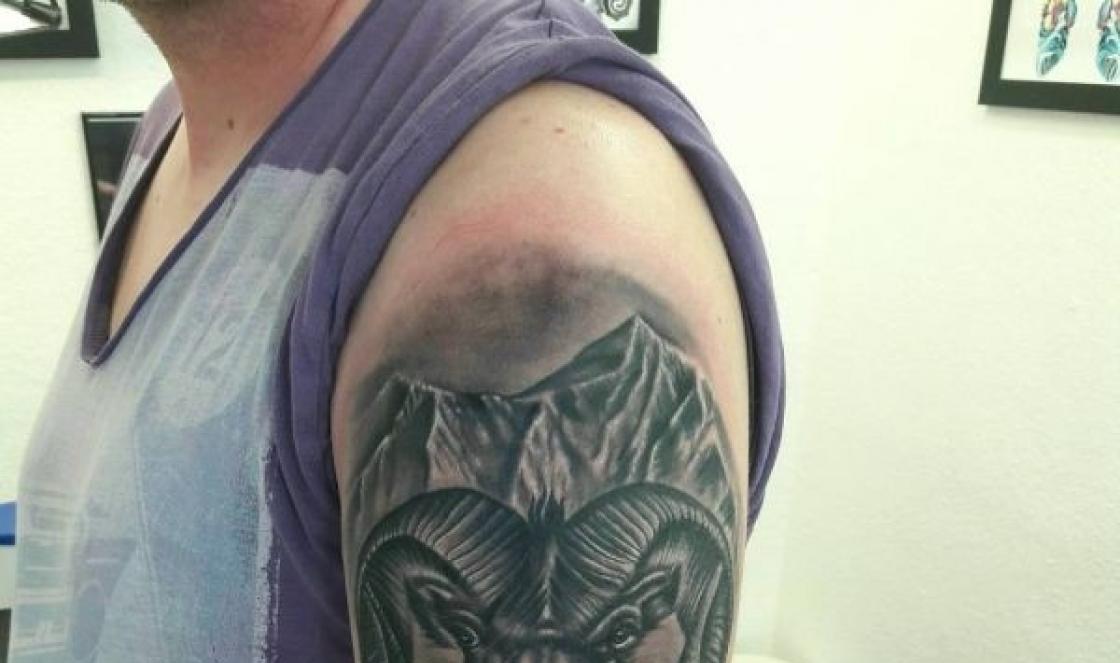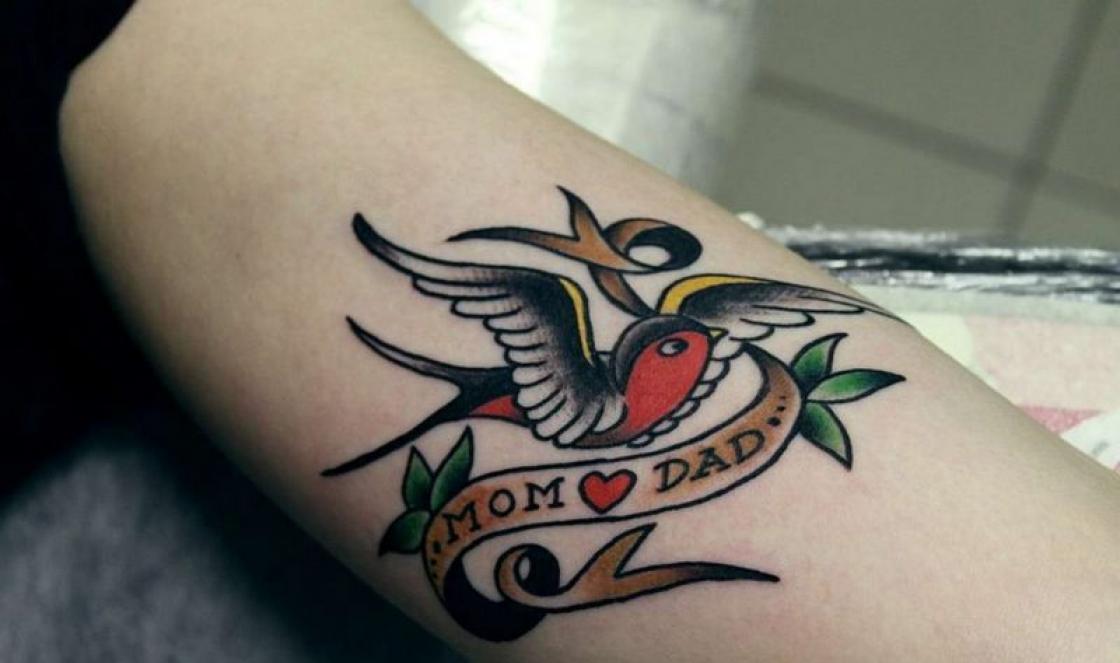Appendectomy is a common operation. Recovery after appendicitis is the final stage that affects the patient’s further health. The operation to remove the appendix is not classified as complex, but if performed incorrectly and after rehabilitation, it can lead to complications.
After surgery
After surgery to remove appendicitis, the patient is placed on a bed with a low headboard and his condition is closely monitored. Recovery from anesthesia occurs individually. For example, the patient begins to move suddenly, which leads to disruption of the integrity of the sutures. After appendicitis surgery, nausea may occur, so on the first day, if vomiting occurs, you should carefully turn the person onto his side (left).
When performing rhinoplasty, the use of aspirin is prohibited 14 days before surgery. Heart bypass offers a chance for a better life for people suffering from coronary artery disease. Like any operation, it also hides its risks. The most important thing that patients should know about complex surgery and the recovery period after it, says Dr. Georgiy Tinov from the Adibadem City Clinic.
Dr. Georgy Tinov works in the cardiac surgery clinic at the Adidamed City Clinic. He has numerous participations and presentations in national and international seminars and congresses, as well as in the selection and preparation of educational materials. Dr. Tinov, in what cases is it necessary to place a cardiac bypass?
The postoperative period is difficult in the first 24 hours, and then the symptoms gradually disappear. If rehabilitation after appendicitis occurs without complications, it takes much less time. So, after 8 hours, the patient can rise in bed and make careful movements, but it should be remembered that under no circumstances should one get up completely. The thirst that inevitably arises after the use of anesthesia is not immediately quenched - just slightly moisten your lips.
Coronary artery bypass is a procedure that treats coronary artery disease. One option is expansion with coronary stent implantation performed by invasive cardiologists, and the other is bypass surgery. Patients whose coronary anatomy is not suitable for stent implantation undergo so-called bypass surgery. The predominant number of patients who are indicated for bypass surgery are patients with coronary artery disease. There are two, three or more cardiac vessels.
In other cases, there is some discomfort for some vessels, such as left coronary artery stenosis. Recently, it is quite common for us to perform surgery on patients who had stents at a previous stage of the disease. What is a bypass and how many types are there?
After appendicitis in children and the elderly, as well as in overweight patients, recovery is slower.
Recovery after surgery includes several stages, the first of which lasts about five days. The day after the appendectomy, the medical staff carefully monitors the patient’s condition.
Once the operating room is left behind, the rehabilitation period begins. At this time, the patient often experiences symptoms such as:
The purpose of the bypass is to deliver blood to the artery after it has become narrowed or blocked. The principle of this is very simple. Using containers on the patient, we jump over the narrowing formed as a result of changes in the atherosclerotic vessel. In terms of which vessels are used for bypass, we talk about two types - venous and arterial.
The African graft parameters used for bypass are several. There are other arteries whose applications for bypass surgery are quite limited, such as the epigastric artery. Accordingly, there are two internal arteries - left and right. These are the most commonly used arterial grafts in Bulgaria and also in the world. The vein grafts used are venous magnon. What worries patients before surgery, how they will take their vein and how they drain their blood afterwards.
- Nausea, vomiting.
- Low-grade fever.
- Discomfort in the area of the seams.
- Blood pressure surges.
- Difficulty emptying the bowel and bladder.
Patient care is provided by medical staff, and the first week is especially important. The physiological functions of the body, temperature, and suture care are monitored. The doctor records the symptoms to avoid complications.
There is no problem because it is not a main vein and does not in any way change the lifestyle or affect the patient's health. A common question is which ones are better. It is absolutely proven that they are arterial. The reason is that the structure of the artery wall is simply significantly different from the structure of the vein. This is closer to what we do. The patency of arterial grafts far exceeds the patency of veins. Unfortunately, however, we are limited in that the number of bypasses that can be done with arterial grafts is limited to two bypasses, three in exceptional cases.
IN postoperative period After removal of appendicitis, you need to behave calmly, follow the doctor’s recommendations, and pay attention to the characteristic symptoms. The body needs to be given time to recover. Treatment after removal of appendicitis in the first 2 days is carried out according to the following scheme: anesthetics (injections) are prescribed, and antibacterial medications are also prescribed to avoid inflammatory processes.
When it is necessary for the patient to make 3-4 or more bypasses, then it is necessary to take this core that we are talking about. We can differentiate between bypasses and how the operation is performed. In one case, the patient's heart does not stop, that is, without extracorporeal circulation. On the other hand, the patient's heart stops, bypasses are performed, and then resumes. We are talking about a routine operation of the extracortical circulation.
Which traversal operations predominate? About 10% of cases in Bulgaria are bypass to a beating heart. However, the procedure is limited by several factors. Firstly, if the joint operation is quite common. There may be a bypass switch with the function of changing the valve or correcting a given valve, which automatically makes it impossible to perform this operation without stopping the heart. In terms of this, there are centers where colleagues generally work without stopping their hearts, but these are exceptions. General rule is that most bypass surgery is performed on a stopped heart with extracorporeal circulation.

In adults, recovery from surgery is faster than in older people and children.
Recovery after removal of uncomplicated appendicitis involves actions that are permitted and strictly prohibited. The patient can:
- Move.
You can roll over and sit down within a day, and get up after 3 days. With complicated appendicitis, you can move only after 2–3 days, and get up even later. Gentle physical activity remains relevant for a month - this is the period for which sick leave often extends after appendicitis. Ninety days is how long it takes to restore an intensive physical regime. Two weeks after solving problems with appendicitis, you can do the exercises recommended by your doctor, and a month later, rehabilitation after removal of appendicitis (uncomplicated) is considered complete and the patient returns to normal household activities.
When clean bypasses are necessary, usually in one or two vessels, the circulation cannot be stopped. Why are cardiac bypasses performed in most cases? As a rule, there is very rarely one bypass. When a vessel supplying the heart becomes compromised, major cardiologists typically place a stent there. Bypass surgery occurs in patients suffering from three or more cardiovascular diseases. The number is strictly individual and depends on how many and how many of the cardiovascular vessels suffer from atherosclerosis.
The most common number is three and depends on the patient's coronary anatomy. Is there a clogged or narrow vessel more than 75% that is good in gauge or flow, it is good to do a bypass. Preferably, it is arterial, but when arteries are insufficient, the leg vein is used.
- Eat.
Your appetite will appear after 12 hours, but not all foods can satisfy your hunger. Nutrition after removal of the appendage on the first day consists of broths, jelly, rice water, mashed potatoes (meat, potatoes), watery porridges, still water. Further, the diet becomes more varied: you can eat dried fruits, apples baked in the oven, meat, regular cereals, fresh fish, and bran bread. Meals should be small, low-fat foods that do not cause bloating.
Can we determine the patient's risks before surgery? All patients who undergo this type of surgery receive a booklet, which is legally required and, in my opinion, important. It describes any complications that may arise, including intubation. He also writes, including the likelihood of tooth extraction for such an operation. All others are also mentioned possible complications, even those that may occur once in 10,000 cases.
There is a scale that is generally accepted and used in all cardiac operations. He can assess the risk of death before the patient enters surgery. In countries such as Bulgaria, the normal risk of death is considered to be less than 5%. What are the main complications that can occur after surgery?
- Wash.
The process occurs locally, you need to avoid getting moisture into the wound. A child should be bathed by an adult. In general, treatment is recommended individual parts bodies.
- Using a bandage after surgery.
A victim of appendicitis (or rather, inflammation of the appendix) should not:
- Engage in professional sports. But physical inactivity is also not a solution. It promotes the formation of bedsores, muscle atrophy and adhesions, so exercise therapy is a necessary component of the postoperative period after appendicitis.
- Lifting heavy objects, overexerting your abdominal muscles.
- Overeat or eat fatty, smoked, salty foods. Exclude legumes, cabbage, grapes, baked goods, seasonings, soda.
- Drinking alcohol is prohibited.
- Be sexually active (in the first week after appendicitis surgery).
- Take a full shower or bath before removing the stitches.
- Saunas, steam baths and swimming pools are contraindicated in the next two months.
We must ensure that the physical regime is calm, the nutrition is healthy, and bad habits It's better to refuse. How quickly the patient recovers depends on following the doctor’s recommendations.
Major complications are not determined in any way or type by the fact that bypass occurs. They are significantly smaller when the intervention is performed without cardiac arrest. Therefore this method is preferred. In the second case, a cardiac machine is used, which unfortunately limits us over time. While the duration of the operation is minimal, this affects and, as a consequence, complications. The most severe outcome of heart surgery and some bypass surgeries are fatal.
Usually this process is normal - no concomitant diseases, the patient is not 85 years old, everything is fine with the kidneys, the heart has normal function and size, it is about 2, maximum 5-6%. Another serious complication is stroke. This risk peaks at less than 1%. Another serious complication is the so-called perioperative myocardial infarction. In a normal heart attack, a coronary artery is completely blocked, causing the heart muscle that supplies it to die.
Features of wound healing
Suture after appendicitis is an important postoperative moment. After what time the stitches are removed and how many days the wound heals are also pressing questions. A suture is the connection of tissues after surgery. They are internal and cutaneous. The former connect the abdominal muscles, and the latter connect the cut skin.
Perioperative surgery occurs immediately before, during, or after bypass surgery. Here also we have no more than 2% of cases, and fatal perioperative myocardial infarction below 0.5%. Infection of the wound itself is another important complication, not only common to cardiac surgery, but to everyone in general. The percentage of severe wound infections varies on average to a maximum of 1-2 cases. These are not fatal complications, but they prolong the patient’s stay in the hospital and create some discomfort.
To avoid this, a minimally invasive surgery method with a smaller incision is used for approximately 3-4 years. Implementation of this manipulation is still rare because it limits the number of traversals that can be performed. Usually this small incision becomes 1 to 2 bypasses, which is rare in cardiac surgery. But it is also an option - something new, but not yet established as a common method.
The photo shows the appearance of a suture after appendicitis. It is located above the pubic area on the right and has a length of up to 10 cm. The surfaces of the skin suture are hard. When stitching, threads are used that are absorbable after surgery (for internal sutures) and those that need to be removed.
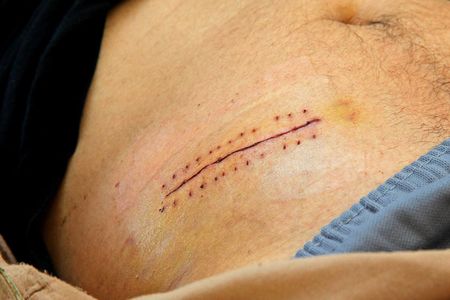
Temporary and reversible renal failure may occur as a result of cardiac arrest and its function being performed by the extracorporeal circulation machine. They are transient and usually resolve within 1-2 days. Should they be replaced at a certain time?
Unfortunately, bypassing does not cure the disease, only the symptoms. The formation of atherosclerotic plaques in the coronary arteries is a disease that continues to develop after bypass surgery. In terms of this, the factors that delay the process of narrowing of the arteries are of two types. One of them is genetic and we cannot change it. But high level cholesterol, triglycerides and blood pressure, stress, uncontrolled diabetes, immobilization, smoking - these are factors that depend on the patient and in his best interests, as limited as possible.
A 10 cm long seam is located above the pubic part
Sutures are removed within the time frame specified by the doctor. Usually, sutures are removed after appendicitis after a decade, but on what specific day the procedure will be scheduled is decided individually, depending on the formation of a crust (granulation). Does the patient feel pain when the external sutures are removed? There is some discomfort, but nothing more.
The progression of atherosclerosis, which is typical for many young people, is one of the reasons for repeated installation of bypass surgery. A 50-year-old man makes several rounds, he knows that he does not have tightness in his chest, he will not get a heart attack, he will maintain his old pattern of life, but after 4-5 years a new narrowing can be created.
The efficiency of the rounds is directly dependent on the time remaining from the operation. The study shows that after the 15th year, more than 50% of venous bypasses are clogged or narrowed to the point that they are inadequate for the flow of blood they deliver. And in arterial patency it does not depend on time, that is, after 20 years the bypass is still passable.
If the seam hurts, lumps, discharge, or itching appear, this indicates that the seams have come apart. If the external seam has separated, hyperemia, itching and peeling are observed, and when they separate internal seams, the situation is more serious - appear strong pain, vomiting, infiltrate or other neoplasm is visible.
With improper care and incorrect rehabilitation, the stitches may come apart. The reasons why the sutures come apart lie in non-compliance with the recommendations of the attending physician, as well as in poor-quality wound treatment. Accordingly, the amount of time allotted for the healing of sutures is directly proportional to compliance with the hospital regime and the postulates of sterility.
Which option is better for the patient - stent or bypass? One of the reasons why fewer patients are getting surgery is because they are told that they will cut them from top to bottom by 3 bypasses, while they will write them in the stent in two days. Yes, the fact is that there is no pain, but there are cases when stents do not help the patient. A stent was inserted, a few months later, then a third, and when the patient came to us a year later, he had a 15-day hospital stay. Eventually he reaches the table again and still endures the opening and taking of the veins.
If a child is operated on, then parents or junior medical staff monitor compliance with the rules. Children are under constant medical supervision, since negligence leads to sutures coming apart and causing inflammation. Consequently, sick leave after appendicitis becomes longer.
The duration of recovery depends on the type of surgery on appendicitis (more precisely, the appendix). Laparoscopy for appendicitis, for example, can minimize negative symptoms and significantly shorten the postoperative period. Accordingly, this will affect the duration of sick leave. When performing laparoscopy, doctors will give you time off from work for about a week. Appendectomy performed by laparoscopy is preferable, of course, in the absence of contraindications. The cosmetic appearance of the suture section is more aesthetic because it is less noticeable if laparoscopic surgery is performed.
And that is why we must make an adequate assessment, in my opinion, of what is better for the patient - a stent or a bypass. How long is the postoperative period? Usually, in 99% of cases, the patient's path to the hospital is the same. Today he works, the same day he is admitted to the intensive care unit, after 5-6 hours he is completely adequate, awake, with sufficient strength to breathe alone. On the next postoperative day, he gets up to sleep with rehabilitation, sits down, and starts eating. And most of the time, most of the day, he works and works.
But it also depends on age and general condition. In short, at the end of the second day after surgery, the patient can be taken to the recovery room. On days 5-6 he switched to self-care. How many days does it take for an operator to fully recover?
After the operation, sick leave is given for an average of a month. How long patients stay in the inpatient department is an individual question, depending on the absence of complications. Most often, after 10–12 days, after removing the stitches, doctors send the patient home with the condition of following a gentle regime. Sick leave lasts longer for the elderly and children - they must be supervised. For adults, it is given for a period of 15 to 30 days. In any case, how long the sick leave lasts is decided by the attending physician, and it also depends on the type of operation.
After discharge
After discharge from the hospital, the patient must continue to adhere to the basic rules:
- Don't eat a lot.
- Walk at a slow pace for short distances every day.
- Avoid lifting heavy objects for about three months.
- After bathing, treat the seam areas with brilliant green.
- Athletes and obese people are better off using a bandage.
- Swimming, dancing, jumping are allowed after 3 months.
It is necessary to gradually restore the usual course of life, achieving complete rehabilitation of the body.
Complications
If the seam hurt, got up heat, purulent discharge appears, then you should not try to get rid of the symptoms on your own, smear the inflamed area or take antipyretics; on the contrary, you must urgently inform the doctor about this. Complications can be caused by reduced immunity, poor sanitation, unprofessionalism of the doctor, or ignoring the regime. Symptoms appear 4 days after appendectomy.
Possible complications:
- Infiltrate.
- Blood loss.
- Delayed bowel movements and urination.
- Hernia after appendicitis. This is caused by refusal to wear a bandage, wound infection, excessive physical exercise. loads.
- Fistulas.
- Respiratory dysfunction.
The presence of these complications is a reason for prolongation sick leave, since the patient remains incapacitated for longer and needs medical assistance. The maximum period of sick leave for complicated cases is one year.
In conclusion, it should be noted that following the rules of recovery after surgery guarantees a speedy recovery and return to your usual way of life. Appendicitis does not imply the occurrence of relapses, therefore it is competent rehabilitation that plays the main role in restoring health and high-quality healing of the postoperative wound.
Recovery after abdominal surgery– a process that requires a certain time and serious attitude.
Although modern surgery Recently, it has achieved a certain level of perfection, carrying out complex operations with minimal damage; high-quality rehabilitation plays an important role in the healing of the patient after surgery. After all, healing and recovery do not occur immediately after surgery; much depends on how the rehabilitation course will proceed. Where to conduct a recovery course, at home or in a medical sanatorium, is everyone’s personal choice.
In the postoperative period, you must adhere to the following recommendations:

- The room should be well ventilated and the lighting should be dim.
- The patient's position depends on the type of surgery performed. During operations on chest– elevated, on the spine – lying, etc.
- After the permission of the attending physician, you need to start moving - this will prevent bedsores, thromboembolism, etc.
- In the first days after surgery, the patient may experience abdominal pain in the suture area. In this case, painkillers are used and ice is applied to the excision site. If the bandage is too tight, it should be replaced or trimmed.
- Any operation is accompanied by copious loss of fluid. During the rehabilitation period, the daily fluid requirement is from 2 to 4 liters.
- A therapeutic diet is simply necessary; its composition depends on the type of pathology.
Hygiene measures
The bandage is usually removed two weeks after application; it should not be wet before then. You can take a shower if you have a special waterproof sticker. If the bandage becomes wet, peels off, or becomes excessively dirty, it should be replaced. It is not recommended to do this yourself; there is a risk of infection; it is better if the bandage is changed by an experienced nurse. It is better if special sterile stickers are applied to the seams; they need to be changed from time to time.
Recovery methods
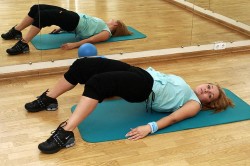
- Physical exercise. A remedy tested for decades, it perfectly helps recovery from various injuries, stroke, and joints. But any physical activity should be carried out only with the permission of a doctor and under his supervision. Physiotherapy should be combined with other physiotherapeutic procedures - massage, heating and magnetotherapy. These include ergotherapy - a comprehensive rehabilitation technique aimed at adapting the body to physical activity.
- Massage. A universal remedy that helps with many diseases, in particular, it accelerates regeneration processes in the postoperative period, improves blood circulation, and promotes the tone of the central nervous system. In combination with various massage oils and healing ointments it gives excellent results.
- Mineral therapy. Mineral waters contribute speedy recovery, increasing the protective functions of the body. Special baths with mineral supplements or natural water are especially effective in treating musculoskeletal functions.
- Electrical stimulation. Exposure of the body to specific electrical impulses has an extremely positive effect on the tone of muscles and nerves. This method is indicated for various motor dysfunctions, stimulating muscles and nerves, improving blood flow in all systems, and activating the cellular structure of the brain.
- Diet. A special way of nutrition after various operations is a whole layer of information.
- The goal of any restorative nutrition system after abdominal surgery is to minimize the load on the operated organ, but at the same time provide the body with all the necessary nutrients. Specific nutritional regimens have been developed for different types of diseases and related operations.
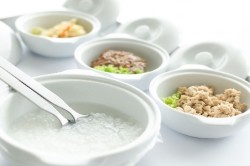
The optimal, but rather harsh option in the first days after surgery is rightfully considered a zero diet. It consists of slightly sweetened tea, various decoctions and jelly, fresh diluted juices, low-fat meat broths, and rice water. Meals should be frequent, but in small portions.
For many diseases, nutrition in the full sense of the word is prescribed only after a few days; before that, the body is fed only through a special probe. Special nutritional drugs and vitamins are administered intravenously.
The zero diet is divided into three options:
- Option 1 (surgical) – described above;
- Option 2 – includes the consumption of various cereals;
- Option 3 – it is allowed to introduce lean meat, various pureed purees, fermented milk products, and bread crumbs into the diet.
In gynecology, for example after surgery on the uterus, there are some nuances. Liquid soups and purees are excluded, the emphasis is on dairy products, cereal porridges, vegetable salads, with the exception of cabbage.
What else do you need to know?
 Sex. It is not recommended to have sex earlier than two weeks later, in order to avoid the sutures coming apart.
Sex. It is not recommended to have sex earlier than two weeks later, in order to avoid the sutures coming apart.
Restoration of working capacity. Returning to work after surgery occurs strictly after consultation with a doctor. It all depends on the severity of the disease, the quality of the operation performed and the intensity of rehabilitation. Typically, the recovery period averages about 2 months. If the job involves physical labor, then heavy lifting is not recommended for six months.
Psychological condition. For a certain time after surgery, there is a high probability of experiencing a general loss of strength, apathy and depression. Don't be afraid of this, it's normal. During the rehabilitation period, changes occur in metabolism, the body adapts to new circumstances. After some time, these symptoms should go away; a course of psychotherapy is not excluded.
Pregnancy. Pregnancy and childbirth should be strictly regulated by the attending physician. Deadlines possible pregnancy after surgery depend on the patient’s condition, the specifics of the disease, and the characteristics of the rehabilitation period.



